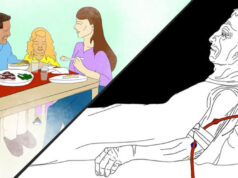
A team of researchers led by Shaifali Sandal (McGill University Health Centre, Montreal, Canada) has shared the results of a study evaluating a new risk model for predicting “inferior patient and graft outcomes” in those who receive a kidney transplant. The study, published in Kidney360, aimed to overcome what its authors describe as the limitations of using delayed graft function (DGF) alone as a measure of graft function and prognosis, despite its use as “an important endpoint in clinical trials”.
Examining data from 792 adult kidney-only deceased donor transplant recipients between 1996 and 2016, the risk model stratified patients by looking at renal function recovery <100% and their 90-day estimated glomerular filtration rate (eGFR)—they note that 24.5% of patients experienced DGF, while 40.5% had renal function recovery below 100%, and 6.9% had an eGFR <30 at 90 days post-transplant. The authors then used Cox proportional hazards models “to assess the independent relationship between the exposure and death-censored graft failure (DCGF) and mortality”.
The median follow-up period for the study was 7.3 years. During this time, Sandal and colleagues observed that the rate of death-censored graft failure (DCGF) was 18.7%, while mortality occurred in 25.1% of recipients. Analysed alongside a group judged as having no risk of inferior outcomes according to their criteria, the team found that kidney recipients demonstrated “an incremental increase in risk of DCGF” in a low-risk group (adjusted hazard ratio [aHR]=1.53, 95% confidence interval [CI]:1.03–2.27), a moderate-risk group (aHR=2.84, 95% CI:1.68–4.79) and a high-risk group (aHR=15.46, 95% CI:8.04–29.71).
When comparing the risk model’s predictive abilities to DGF alone, Sandal and her team found when using a “hierarchical approach” that “each additional exposure in the risk model predicted the risk of DCGF better than DGF alone”. The authors also state that 100 random bootstrap replications “supported the internal validity of the risk model”. On validity, they add that an external validation cohort who were evaluated as being at lower DCGF risk found “similar non-significant trends”.
The risk model, Sandal and colleagues argue, offers more “incremental assessment” of the risk of adverse outcomes than DGF on its own. “This,” they conclude, “can help advance the field of risk assessment in transplantation and inform therapeutic decision-making in patients at the highest spectrum of inferior outcomes.”











